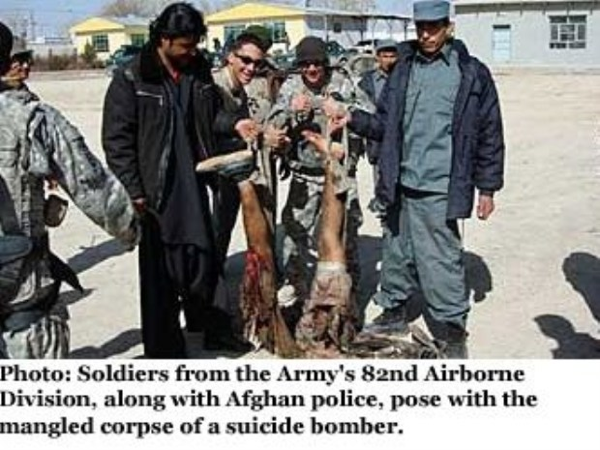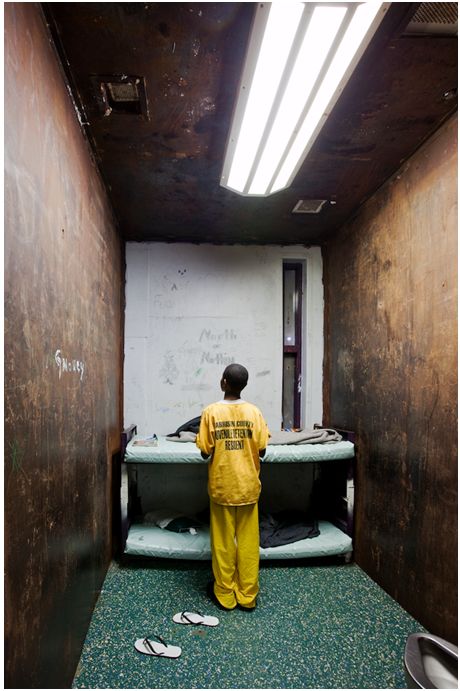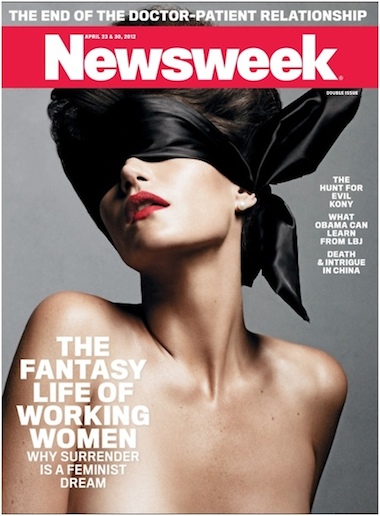Notes
Reading the Photo of U.S. Troops Posing With Afghan Suicide Bomber Body Parts

Before The LA Times takes too much credit for courageously putting forth two images (out of eighteen) of U.S. troops posing with body parts of Afghan suicide bombers, let’s note that the only overt suicide bomber photo The Times published (online, at least) is so small and fuzzy (here, blown up double-size), it’s hard to even make out. Notice also how the photo caption was made a part of the jpeg discouraging anyone from publishing the photo at a larger scale because the text will distort.
Rather than belabor the argument over whether the photos should have been released or not, I invite you to revisit my comments on the visual censorship issue in this post on the suppression of the bin Laden death images. While the standard complaint is that photos like these lead to retaliation against U.S. troops, it is worth noting these photos were submitted by a soldier in the offending 82nd Airborne as a deterrent to what he deemed ongoing troop behavior that would lead to, yes, retaliation by the locals.
There is a larger point to be made, however, when it comes to “the control” of war imagery: in the past two months, the newswires have been inundated with disastrous images of the U.S. engagement in Afghanistan, including: the drone strike that killed 8 children in Eastern Afghanistan; the anti-American riots that broke out in Kabul and other cities following the military’s incineration of copies of the Koran; the news that an American soldier had massacred up to sixteen Afghan citizens and children in Kandahar; and the suicide bombing that injured several U.S. troops north of Kabul. With all that raining down, is it even logical or relevant to talk about what impact the release of these latest (two-year-old) images are going to have on the Afghan public, or is the significance here more the fact they are part of a rout?
Because our mission at BagNews is to read the pictures as they come, however, one picture at a time, I had some thoughts and questions.
First, there is something desperate and pathetic about mocking a suicide bomber who willfully submitted to dismemberment to injure American troops. To the extent he did this to himself, I don’t really get where there is even a trophy there. It’s also telling the Americans would hold up these severed legs in a “split eagle.” I guess the suggestion — because there is nothing left between these members — is that the troops, in their revenge portrait, draw some sense of satisfaction from the idea the bomber has been emasculated.
Also curious here are the expressions and the role of the Afghan police. Notice how they, not the Americans, hold up the corpse. Perhaps the policeman on the left is drawing more satisfaction and is more in sync with the Americans (I saw the hard copy and he might have been smiling), but the more visible policeman on the right seems much less at ease. I believe the discrepancy in expressions and roles offers toxic allusions. Are the Afghans mostly placating the American liberator/occupiers? And how much, beyond carrying our water — or in this case, our mangled trophies — does the relationship really extend?
(Edited to discuss one photo instead of two.)
(photos via LA Times.)


Reactions
Comments Powered by Disqus